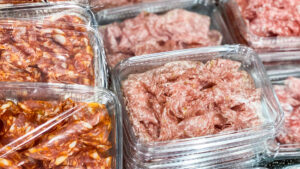In food safety, sanitation, and quality assurance, every element in the production environment plays a role in safeguarding food from contamination. For food processing businesses, the importance of hygiene protocols and environmental monitoring cannot be overstated for its impact on public health. A recent FDA study conducted with the University of Arizona and other key stakeholders offers new insights into a previously under-addressed area: airborne pathogens in agricultural regions.
The multi-year study focused on the agricultural areas in Yuma County, Arizona, a region responsible for growing much of the leafy greens sold in the U.S. Researchers explored environmental factors that may introduce, spread, and sustain pathogens like Escherichia coli (E. coli) in the food supply chain. A key finding from the study demonstrated that airborne transmission of pathogens, including Shiga toxin-producing E. coli (STEC), is possible and happens with greater frequency near large-scale livestock operations.
Researchers documented viable STEC in the air and dust surrounding these concentrated animal feeding operations. The study found that dust from cattle pens can deposit pathogens onto nearby soil, water, and even plant tissues, with pathogen presence diminishing only as sampling points moved further from the livestock operations.
 For food safety and sanitation managers, this finding points to the importance of addressing airborne pathogens as part of a comprehensive food safety program. Traditionally, hygiene practices have focused on surface sanitation, water treatment, and direct food contact zones. However, the FDA’s study suggests that the air inside and around food production environments plays a much more critical role than traditionally thought.
For food safety and sanitation managers, this finding points to the importance of addressing airborne pathogens as part of a comprehensive food safety program. Traditionally, hygiene practices have focused on surface sanitation, water treatment, and direct food contact zones. However, the FDA’s study suggests that the air inside and around food production environments plays a much more critical role than traditionally thought.
As Larry Keener, a Certified Food Scientist (CFS) and IFT Fellow, has pointed out, “The air inside food production facilities is the largest food contact surface (zone 1) by both volume and surface area. It is also the most neglected surface of most environmental monitoring programs.” This revelation is particularly pertinent for those in the food processing industry offering ready-to-eat (RTE) products, where pathogen control is paramount.
Airborne pathogens can be a hidden threat to food safety. While traditional hygiene methods target source control, surfaces, and equipment, the air circulating throughout a facility can spread contaminants, creating opportunities for foodborne pathogens to bypass conventional sanitation efforts. Pathogens like E. coli can remain viable in the air, and once airborne, these microorganisms can settle on surfaces, equipment, and even directly on food products.
Air filtration and circulation are critical components of a sanitary food processing environment. Utilizing the appropriately rated MERV filter and the correct amount of air changes per hour (ACH) helps capture particulate matter and replace contaminated air with clean air as it passes through the air handling system. High-rated MERV filters and frequent ACHs become more costly as the numbers increase, affecting energy consumption and impacting HVAC equipment.
Integrating air cleaning technology that actively neutralizes pathogens in the air and on surfaces in the treatment area—that does not solely rely on filtration—into your hygiene protocols adds another layer of defense against microbial contamination. Food safety teams can reduce the risk of pathogens spreading through the air in the processing room.
The Pyure Dynamic Protection® system offers a proven solution to reduce airborne pathogens, including E. coli, in food processing environments. By cleaning the air that comes into contact with everything from raw ingredients to machinery, Pyure’s technology helps mitigate contamination risks that could go undetected with existing cleaning practices. Our technology is proven to reduce microbial populations, including E. coli, listeria, salmonella, and more. See the results from a customer here.
Incorporating Pyure into your facility’s food safety program can help mitigate contamination risks by addressing the often-overlooked airborne element. Pyure’s technology not only cleans the air but also actively reduces harmful bacteria and pathogens on surfaces, creating a safer environment for food production.
For sanitation managers, directors of quality assurance, and food safety teams, investing in air cleaning technology like Pyure can help transform your facility into a fortress against airborne pathogens. To learn more about how Pyure can integrate into your existing hygiene protocols, visit Pyure’s Scientific Evidence page for insights or contact us for detailed third-party studies.
By enhancing food safety through airborne pathogen control alongside surface sanitation, food processing businesses can create a more comprehensive and effective food safety strategy that protects products, consumers, and the company.